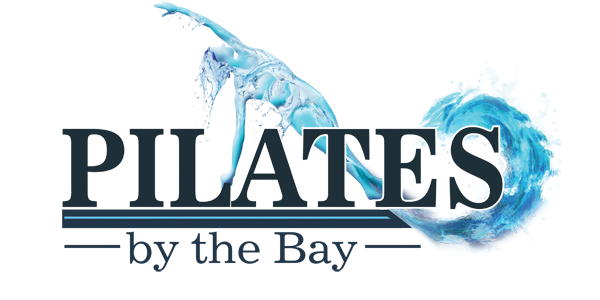Enrollment is now OPEN for Pilates Teacher Training at Pilates by the Bay in Toms River, New Jersey. The session to become certified in Mat and Reformer for Instructors will begin on September 17th but you MUST be registered by September 1, 2022 in order to join this class.
The Registration Deadline Is September 1, 2022
Watch this informative Zoom call from 8/10/22 where Jessica reviews details about the course and answers Michele’s questions about requirements and costs at the end of the video.
Read the following edited transcript for this video, below.
Ready to enroll in this exciting program?
Get in touch and let us know you watched the info session to receive a special discount of
$150 OFF Tuition before Sunday 8/15/22.
My name is Jessica Spillane. I am a fellow Jersey girl. You guys will actually be the first New Jersey people that I get to experience this Pilates Teacher Training Program from a host studio standpoint. You’ll be my first Jersey girl, which I’m super excited about! Everybody’s been all over the world and now I’m in my own backyard.
I’m originally power Pilates trained in Manhattan 20 years ago. So, 2003 is when I graduated. So it’s a classical Pilates teacher training program.
I studied directly under Bob Liekens who was one of Romana Kryzanowska’s protege. I’m sure 1000 people refer to themselves as Romana’s proteges, however, Bob is the one that really created the teacher training program for her and sort of made it a formal program. They eventually parted ways, I don’t exactly know the details as to why, and he moved over to Power Pilates and brought that teacher training program with him. That is the program that I went through. And that is the program that this program is modeled after.
I tweaked it a little bit along the way and I’ve added some information along the way but in its foundation, this is very much the same model that Romana used herself.
The Development of the Pilates Teacher Training Program
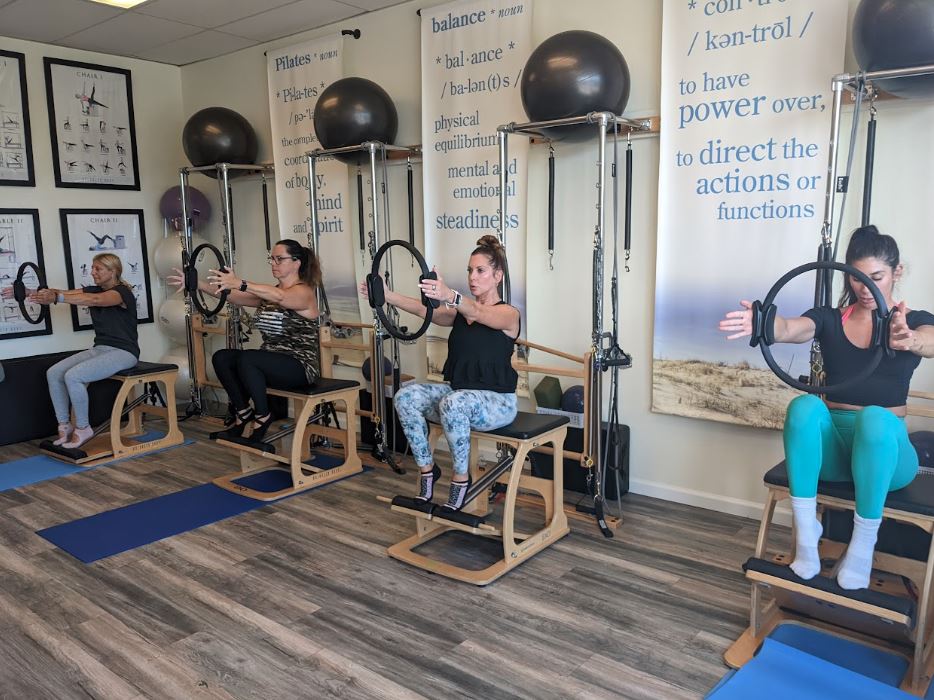
I opened up my own studio in 2004. I had a commitment to myself that I will become a business owner within one year of graduating from teacher training. And I did exactly that. I was actually one week early on that goal. So that was a nice thing.
I have been a brick and mortar studio owner is 2004 for almost 20 years. I was really the first the only game in town when I first opened up in Bergen County. It was a wild experience. My very first day that I opened I had obviously zero clients. I tried to do just like free 30 minute sessions and within six months I had 50 private sessions a week. Five-zero. That was working 50 hours a week. Then doing my accounting and my books and my marketing and stuff on top of that. So I was exhausted.
I was desperately looking for other teachers but couldn’t find anyone to save my life. I found two people who I just adored their personalities. I thought they were great, but they they weren’t trained. So I actually sponsored them and sent them to Power Pilates and Power allowed them to apprentice at my studio. Both of those women still teach today. One of them is actually down at the Jersey Shore. The other one teaches at Lifetime in Ramsey so they are still teaching today after getting trained through me back then.
Fast forward a few years I’m still desperate for teachers so I decided to just go out on my own and make a Pilates Teacher Training Program. If I was going to constantly need more teachers to grow, I didn’t want to keep sponsoring people when I could do the work myself.
I spent a year writing this manual, taking all the pictures doing all the photography and editing it. It’s about a 400 page manual when it’s the full comprehensive. I set out to to do my own teacher training and really was very successful at it.
To date, I probably have about 200 people who graduated my program. I’ve been hired by the local gyms, I’ve been hired by my local JCC to train their staff. And when COVID happened, sort of gave me a chance to take a step back and give it a fresh coat of paint. I took a look at the material and I kind of did some editing on the manual but then I took the step of actually recording the entire thing and making it an online curriculum.
Bringing The Pilates Teacher Training Curriculum Online
Bringing it online and bringing it into this post COVID world. It’s making it so much more accessible. People can listen to all the recordings when they’re at the grocery store, when they’re on the pickup line, or when they’re at home in bed. Rather than having to be present whenever I’m lecturing, and then writing down the notes and hoping that you remember what those notes mean. That’s what everybody had been doing up until I converted this to online.
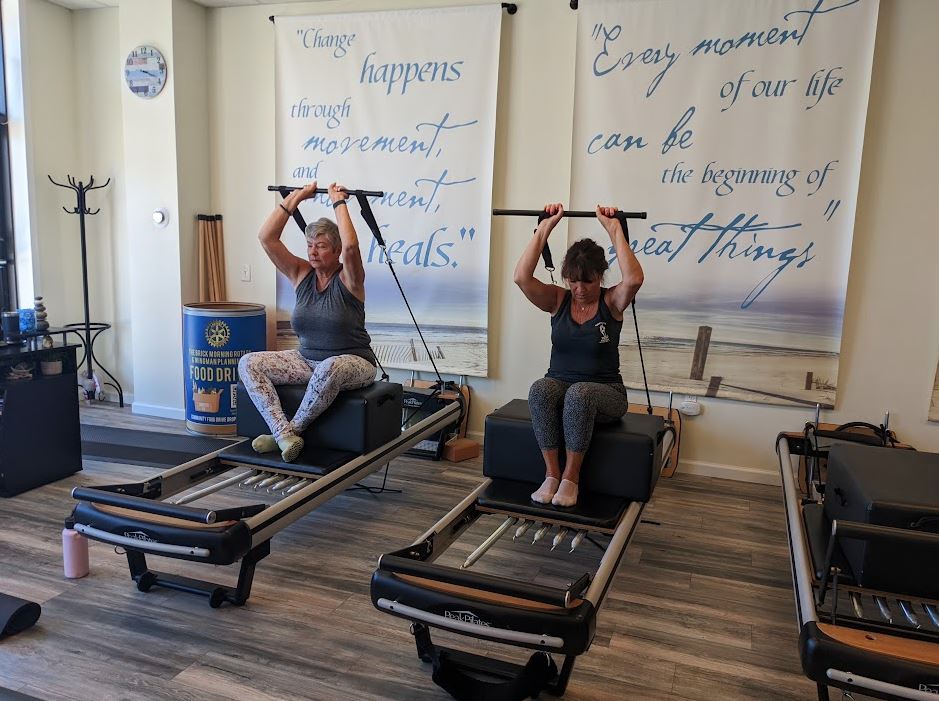
What actually gave me the idea was before COVID happened I had a group and I had this 25 year old girl who was super smart and she recorded absolutely everything I said. In all my seminars, all my workshops, she sat there with her phone. She asked my permission of course, and I asked her “Why are you why are you recording everything I say? Isn’t that kind of annoying?” She said, “No, I watch it back and I am able to absorb so much more by listening to everything that you say rather than just looking at my notes.”
That was sort of a lightbulb moment for me. So when COVID happened it was an opportunity to bring that to life. So the entire thing has been recorded. I am going to show a little bit of the curriculum.”
Michele says that as somebody who went through other Pilates teacher training elsewhere, it was really difficult because even reviewing the notes that I took, I’m lucky if I were able to read my own handwriting half the time. You are trying to pay attention. You’re trying to thinking about what you’re doing and get all those things ready. So recording is the best way to go.
It really is.
I think in today’s day and age, because we have such short attention spans, reading is actually becoming more and more difficult. Sometimes it’s hard to get to the bottom of the page before our mind start wandering or somebody asks a question or a ding happens on our phone. So having it accessible in this format, I think it’s just making it it’s adapting it to our world today and how people are consuming information.
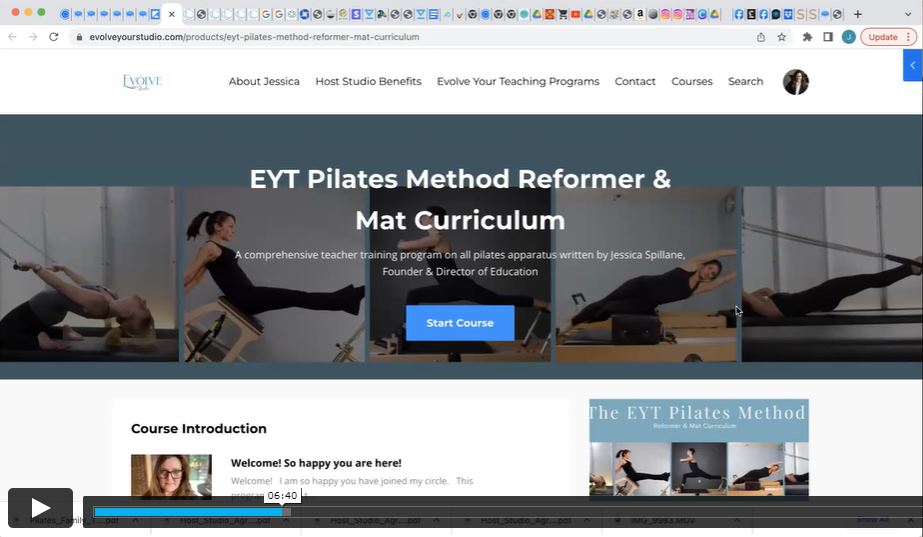
Previewing the Online Curriculum
So this is what would open, so as soon as you register this, you get access to the curriculum immediately. You can start sort of going through the whole thing.
I have every one of these little modules here. Welcome! So happy you’re here! A little video of myself welcoming you.
I have a download of the manual here and I have your apprentice log sheet which is where your would keep track of your hours. That’s just an example.
Really the important part is when you get down to the actual material of the work. I have history here. I have a family tree actually I’m kind of proud of my family tree so if you don’t mind, I’m just gonna show that off for a second.
I’m so excited about that because I never learned a lot about that.
Many of the programs do not teach this. Because I came from right I came from the lineage technically I learned all of that. So we have a little picture of Joe Pilates, and then we have a picture of Clara Pilates at the top. We have the people who are considered the elders. Romana, Mary Bowen, Ron Fletcher, Carola, and the whole crew. These are the originals who took to his work and they either adapted it themselves in some fashion, or they carried it on, they carried on his legacy. Romana being was most famous for carrying on his legacy. And because she was in New York, she is the one that I had access to.
Eve Gentry and Ron Fletcher had moved to California. So the East Coast doesn’t have a lot of the Ron Fletcher method over here, whereas on the West Coast, they probably don’t have a lot of Romana. So I come out of the Romana lineage, she was the self proclaimed successor. We go into all of that in the program.
Then, I bring out, who are the cast of characters today? And you’ll see here I am, and then obviously, you would be underneath me. So this is just an example. I have this kind of stuff for everything.
We go through a little bit of anatomy. We go through the Principles of Pilates. We go through the principles of teaching, and then we get into the fun stuff, which is the actual movements.
So here I’ll take an example of footwork. The first exercise we all do, we’re all familiar with it. There’s a video here which is a video of me teaching footwork and explaining footwork. We have the objective, we have the technique, the body scan, the repetitions that you would go through, what spring load everyone would use and what muscles are engaged. So we are tell you exactly what we’re working in each one of the positions of the footwork.
What’s the best part about it? Addressing Common Problems.
So after we get through that, I go through what I refer to as common problems. Common problems with each one of these movements. And what does that mean? So an example here would be… “The shoulder blocks feel too heavy or they’re uncomfortable.” When you’re a new client, a lot of times they’ll press out on the reformer, and they will say “It’s a little heavy, or that hurts my shoulder a little bit. Can you lighten the spring?” What’s a new teacher going to do? She’s gonna jump right up and lighten the spring.
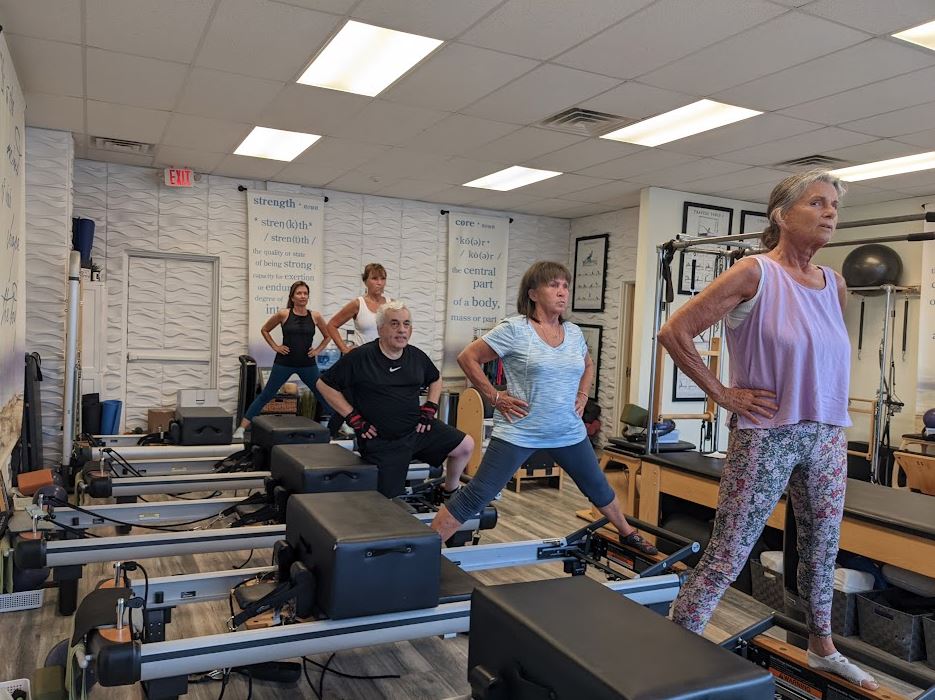
But why don’t we take a moment here and try to figure out what this actually my mean. Let’s troubleshoot it.
Someone who feels the shoulder block is too heavy could quite possibly mean their shoulders are jacked up into the blocks. They have tension, they are walking around like this. So let’s first cue them to draw their shoulder down their back, roll their shoulder blades back, and maybe even reposition slightly so that the shoulder block doesn’t hit the bone and it hits the anterior deltoid instead of the medial. Those are examples of a problem that could we can probably solve and then maybe they’re like, oh, that fix the problem. Thank you very much. Or if it doesn’t, then you can take off the spring.
But I want to create teachers know how to problem solve, not teachers who are who are moved by their clients responses all the time. You know, a lot of times clients don’t know that this, might mean that. I want you, as a teacher, to know that this means that and then educate your client about that.
Pilates teacher Vs. Pilates instructor
I do believe there’s a difference between being a Pilates teacher and being a Pilates instructor. A Pilates teacher, teaches. We impart knowledge. I want our clients to walk out of the room at the end of our session knowing something more about themselves, their bodies, or movement in general.
Whereas, a Pilates instructor delivers instructions without the education behind it. So my goal is to create teachers.
The way the program is structured
I have this format for all of the movements on the reformer and on the mat. And then after this is completed anybody who wants to proceed, they can continue and add on Cadillac, Chair, or Barrels. All of those are available but I do require that everyone goes through the mat and reformer first to create their solid foundation before we start layering on the additional apparatus.
In this program, you’ll have instant access to the online curriculum. By September 1st I’m going to be shipping out everybody’s manuals because September 1st is when registration closes.
Seminars and Workshops
We will then have a series of seminars and workshops. So let’s define the two of them.
A seminar is a long form working session. We have three of those, one of them is beginner, one is intermediate and one is advanced. They are about six to seven weeks apart in between each one of them. The only one that’s scheduled is beginner and that’s September 17th. For the Intermediate and Advanced, I will do a poll amongst all participants and figure out which day works best for everybody and the majority rules. I imagine it will be in November at in the beginning of January will be when we do the intermediate and advanced sessions.
For those sessions, we are all on zoom in our host studios. And everyone’s going to come prepared to move, prepared to work, prepared to dig in deep about the movements. Develop your Pilates eye. Stand up and practice teaching. Shed any vulnerabilities and develop confidence with teaching and articulating the movements.
In between each of these seminars. I have a one hour weekly workshops. They are on Thursdays at 5:30pm And I should add that all of this is recorded. So, in the event that somebody is not able to come in, you have access to the recording. Workshops are where we drill down any one specific topic. There is no way for us to to actually attack every bit of information in these seminars. So, just the way you would teach somebody, you teach somebody a few movements and then you progress them and you layer more information on, layer more information on, I do the same thing here.
So our workshops build on each other. So I talked about we we will discuss anything from touching – how to touch a client and when to touch. Last week I did professionalism and ethics in the industry. Now I’m moving into the anatomy portion. So this week’s workshop is on the spine, the skeletal structure as well as muscles that surround the spine. I’ve done breath workshops, I’ve done opposition workshops, so variety of different topics and I have those on a weekly basis.
By the time we get to the advanced seminar, we are done with our workshops. After the advanced seminar it is your time to dig in and continue your practice which leads up to your final exam.
The apprenticeship
Now let’s talk about the apprenticeship which the apprenticeship really is what’s layered on top of all of this. So the seminars are in person, there are three of them. The workshops are weekly, there are probably 12 of them. I sometimes go long because I can you know I can never stop imparting more knowledge on people. Again, all that is recorded.
The apprenticeship is self guided. The apprenticeship is done on your schedule and as it’s convenient for you. The apprenticeship has four components – observation, practice, self practice and self study.
Observation is probably the smallest portion of the apprenticeship. What observation is is you going to Michele’s studio and sitting quietly in the corner and watching her, or her other teachers, teach sessions. Why in the world would you want to do that? Well, I want you to start looking at this through a teacher’s eyes, not through the client’s eyes. I want you to see what her modifications are. What kind of cues does she use? How does she handle when a client might be nasty? How does she handle it when someone’s late or someone’s not listening? Jot down some notes. Inform yourself this way, learn this way, and then move on. You can ask questions at the end of her classes or at the end of her day.
That’s the smallest component. After the first month, you don’t need to observe anymore you’ve taken it all and at that point.
Self study is on your own time and it can be done at home. Self study is going through the manual, taking notes and going through the online curriculum and watching the videos, not just once, but multiple times, until you internalize the information.
Self practice would be the sessions that you are already taking in Michele’s studio or starting to take sessions or working yourself out. Working yourself out could mean going to the studio whenever Michelle says it’s okay. Laying down the reformer and giving yourself a session try to analyze how does it feel? What happens if I turn my toes in? What happens if I turn my toes out? What happens if I point my toes? What are the feelings that happen so that I can start to learn all those little nuances? When I teach, I can tell them that if you point your toes you’re gonna feel anterior work. If you flex your feet you’re gonna feel the back. You’ll start to know those things.
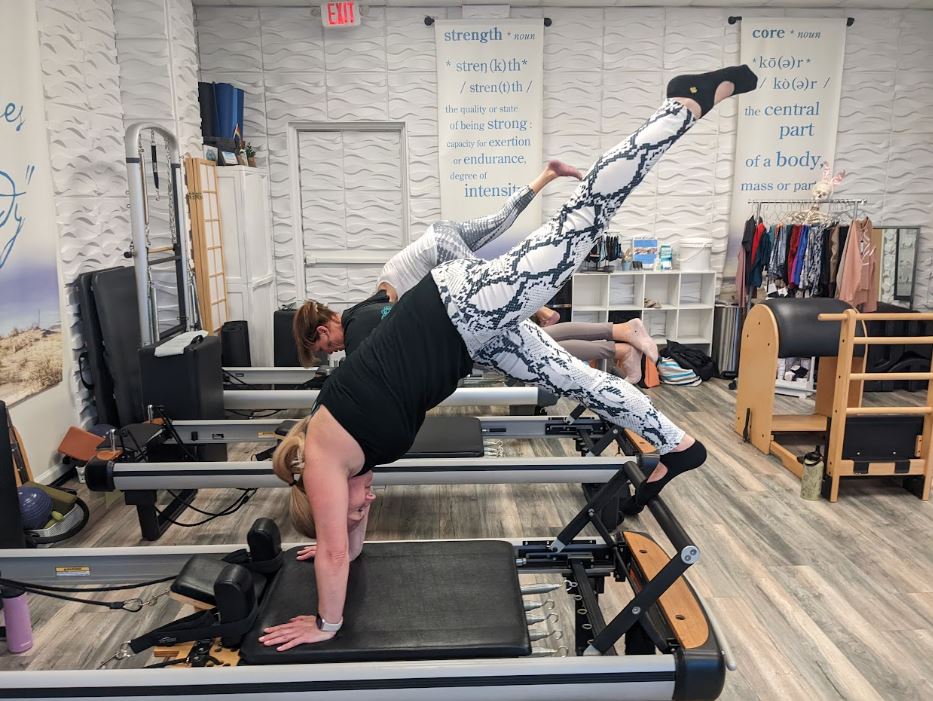
Practice teaching would be the biggest part. You would go to the studio, on your time, when it’s convenient for you and when it’s convenient for Michelle, and you would practice with your fellow apprentices or friends and family. You would start giving them sessions. After you’re done with your beginner test and you’ve passed your beginner test, you are more than welcome to start practicing on real people that Michelle gives you, or that you may even solicit out in the world.
When I say real people, that means people who you’re there to give them a real session. It’s not the people who are going to forgive you because they love you. Right? We want you to have real life experience with someone you might disappoint. Or someone who might not be able to do that exercise and is getting annoyed with you because you keep trying to teach them the same thing over and over and they’re not getting it. Your your mother is always going to forgive you and say “you did such a good job” no matter how bad you are. A real person isn’t going to be that forgiving. So that’s what my definition is for real person.
Family aren’t likely to be truthful. Whereas, if you have that person that called the studio called Michelle studio and said, “I’ve never done Pilates before. Can I have an intro session?” You can do that intro session and you’re gonna be able to tell from their face, whether you’re getting it, if they’re getting it or not, and you’re getting through to them. So that’s the experience.
That’s what builds a teacher.
So that’s basically the summary of it sounds like a lot, but really the only part that is scheduled are the three seminars and the workshops. And again, if it doesn’t work for your schedule, you can watch the recording.
How Long Does The Program Take?
Most people it takes about six months to get through this. Because life is hard, right life is chaotic. We all have a lot on our plate, a lot of responsibilities, a lot of things pulling at our attention and I am beyond forgiving about that.
I try to give you a little milestones. I do my best to keep you on track because I don’t want anybody losing their their way completely that they actually don’t finish the program or anything like that. I don’t want that to happen. But I do completely understand that people get sidetracked and it happens. So I try to be as flexible as I can and I’ve tried to build this program to be as flexible as possible.
That’s my story!
How Much Does The Pilates Teacher Training Program Cost?
The cost is $3,650 for the reformer in the mat and it’s broken up into three payments. If anybody needs deeper accommodations, you are certainly welcome to ask me. I’m happy to help in any way that I can.
The first payment I do have a coupon code for anybody who watches this. So this is going to be the test – if you watch the info session, you’ll get the coupon code, we’re going to bury it in here. The coupon code $150 off valid through Sunday. For anybody who wants to sign up you’ll get you can use that coupon code to get that discount – it will come off of the first payment.
If they want to add on any modules later on, they can. The Cadillac is $1500, Chair is $1200, and Barrel is $950.
And just so everybody’s aware, if you’ve done any research on it, Pilates teacher training runs anywhere between $8,000 to $10,000 these days. And in many cases, they require that you fly to their headquarters to get trained. So, not only are you spending the $8,000 to $10,000, but you are also paying for those travel costs multiple times.
My mission with this program is to disrupt that business model because it’s not helping anybody. It’s not helping the studio owners who need clients and it’s not helping people who want to become teachers.
They want to become teachers. We have to make education accessible to them. And that’s what I’m trying to do and it seems to be going pretty damn well. A lot of studio owners are agreeing with me. So, if you have to fly to Toronto to get trained, you know, eight times in a year and a half. It’s just not doable. You know, if I wanted to become a doctor, I would have become a doctor.
And you’re not getting that mentorship.
What About Teachers Who Are Already Certified? Can They Do The Add Ons?
That’s actually very good question. Nobody has asked me that question before. I would think I would be comfortable with them adding on the Cadillac, the Barrel and the Chair.
I think they would probably figure out pretty quickly if they needed at some of my theory portion of the curriculum. And I’d be happy to share that with them. So yeah, that would be fine. If they’re already trained in those apparatus. No problem.
Differences Between Pilates Teacher Training Programs
I believe that any school that’s out there, there’s merit and value to all of them. None of them are wrong. We’re going to have differing views, differing philosophies on things, but none of them are wrong. There are ones that look at it from a more medical standpoint. There are ones that look at it more from a fitness and athletic standpoint. There are some that look at it more from like a yogi standpoint. So they’re all right. They’re just different approaches to the same thing.
This program is classical, meaning it’s as Joe intended it to be. But I then take it and say “okay, but let’s adapt it to the modern body.” Because when Joe was alive and developing this, there weren’t computers and cell phones. People weren’t sitting on their asses all day long on the computer. So while Joe had it this way, for this reason, I think we maybe need to adapt Joe’s approach a little bit to meet 2022s bodies.
If you have questions, get in touch and we’ll get those answers to you
Jessica’s phone number, for anybody to text me is 201-820-5312. So anyone has a direct question that they want to ask – Just text me we will work it all out.
So I just did this program last semester and I had a studio in Hong Kong. I have never met these people face to face because of the time difference. They just submitted their beginner exams and they are perfect. So that tells me that it’s working. If it wasn’t working, then their tests would be a disaster, but they’ve been watching everything. I’ve obviously done a decent job. They’ve done a decent job. So it’s, it’s okay, if somebody misses something. I now can say that with confidence.
